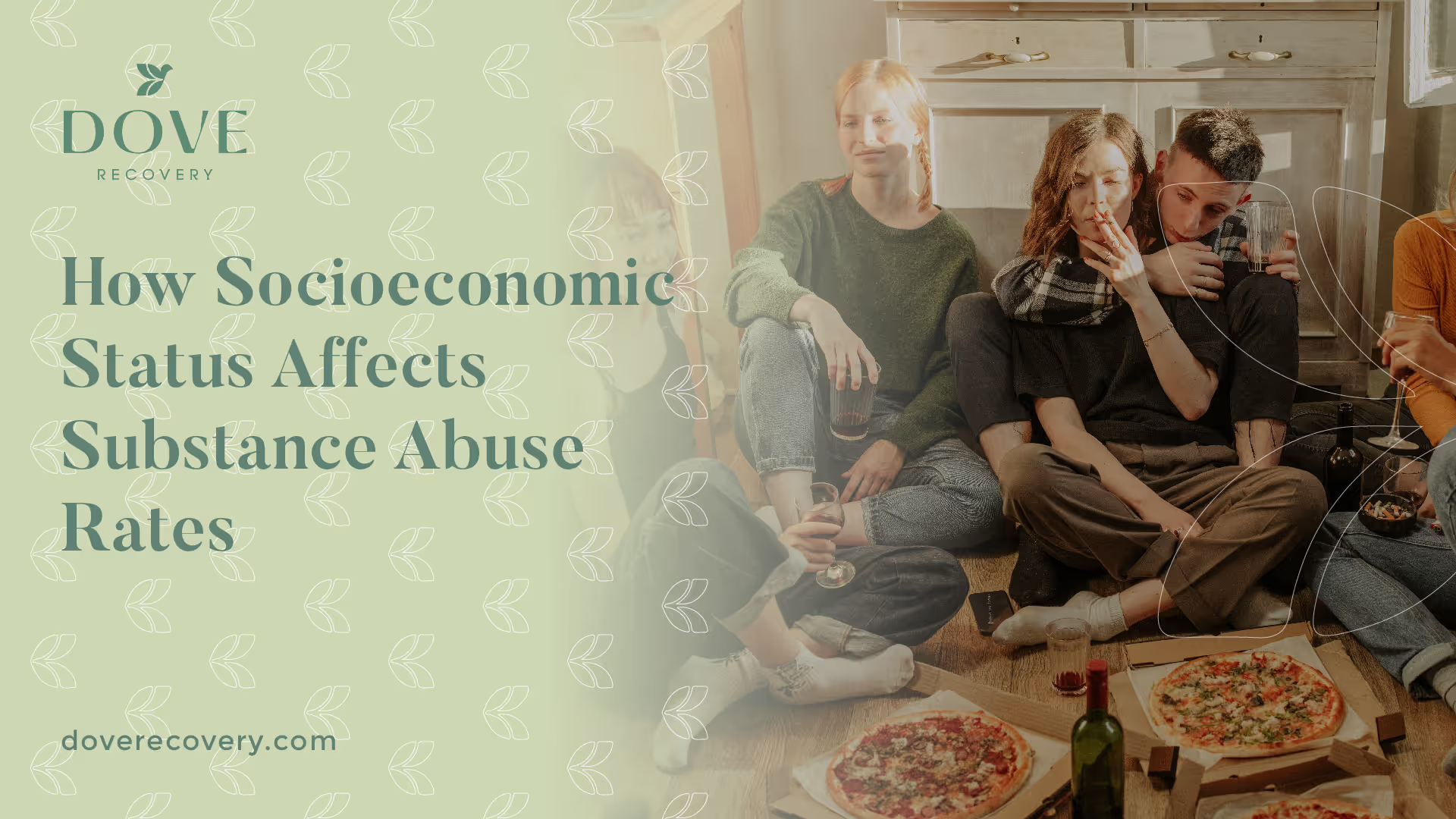Substance Abuse Addiction And Age Groups Guide

Substance abuse is a serious issue that affects people of all ages, genders, and backgrounds. However, one factor that plays a significant role in substance abuse is age. Research shows that the average age of substance abuse varies depending on the type of substance being used. In this article, we will take a closer look at the average age of substance abuse and explore some of the reasons behind these trends.
When Do Most People Start Using Drugs?

According to the National Institute on Drug Abuse (NIDA), most individuals who struggle with substance abuse begin using drugs or alcohol during adolescence or early adulthood. In fact, research shows that 90% of adults who have a substance use disorder began using addictive substances before the age of 18.
There are several reasons why young people may be more susceptible to drug and alcohol use:
Brain development
The teenage brain is still developing, particularly in the areas that control decision-making, impulse control, and judgment. This makes teenagers more likely to engage in risky behaviors, including experimenting with drugs or alcohol.
Peer pressure
Teenagers often face significant pressure to fit in with their peers and be accepted by their social group. This can lead them to engage in behaviors they might not otherwise consider, including substance use.
Mental health issues
Young people who suffer from mental health issues such as depression, anxiety, or trauma may be more likely to turn to drugs or alcohol as a coping mechanism.
Environmental factors
Young people who grow up in environments where drug and alcohol use is normalized or even encouraged may be more likely to experiment with these substances.
As such, it's essential for parents, educators, healthcare professionals, and other concerned parties to be aware of these risk factors and work together to provide young people with the resources they need to make healthy choices and avoid drug and alcohol addiction.
This may include education on the dangers of substance use, providing access to mental health support services, creating safe and supportive environments at home and school, and offering positive alternatives to risky behaviors.
Average Age of Use for Different Substances
Alcohol
Alcohol is one of the most commonly abused substances in the world. According to the National Survey on Drug Use and Health, the average age of first use of alcohol is 14.5 years old. Furthermore, the age group with the highest rates of alcohol use disorder (AUD) is young adults between the ages of 18 and 25. This trend can be attributed to a variety of factors, including peer pressure, stress, and a lack of access to other coping mechanisms.
Marijuana
Marijuana is another substance that is commonly abused, particularly among young adults. According to the Monitoring the Future Study, the average age of first use of marijuana is 17 years old, and rates of use are highest among people between the ages of 18 and 25. This is likely due in part to the fact that marijuana is becoming increasingly legalized and normalized in many parts of the world, making it more accessible to young people.
Opioids
Opioid abuse has become a major public health crisis in recent years. According to the National Institute on Drug Abuse, the average age of first use of prescription opioids is 21.2 years old, and the age group with the highest rates of opioid overdose deaths is adults between the ages of 25 and 54. This trend can be attributed to a variety of factors, including over-prescription of opioids for pain management and a lack of access to alternative treatments.
Stimulants
Stimulant abuse, including the abuse of drugs like cocaine and methamphetamine, is also a growing problem. According to the National Survey on Drug Use and Health, the average age of first use of cocaine is 22.5 years old, and rates of use are highest among young adults between the ages of 18 and 25. Similarly, the average age of first use of methamphetamine is 19.8 years old, and rates of use are highest among adults between the ages of 18 and 34. These trends can be attributed to a variety of factors, including the desire for increased energy and productivity, as well as the thrill of experimentation.
Top 10 Drugs Abused by Teens

According to the National Institute on Drug Abuse, there are several drugs that are commonly abused by teenagers. Here's a list of the top 10 drugs abused by teens:
- Alcohol
- Marijuana
- Prescription and over-the-counter medications (such as opioids, benzodiazepines, and cough syrup)
- Tobacco and nicotine products
- Synthetic cannabinoids (such as K2 or Spice)
- Synthetic cathinones (such as bath salts)
- Cocaine
- Methamphetamine
- Inhalants (such as glue or paint thinner)
- Hallucinogens (such as LSD or mushrooms)
It's important to note that while these substances are among the most commonly abused by teenagers, they are not the only ones that can lead to addiction and other negative consequences. Additionally, some of these substances may be legal for adults to use in certain contexts, but can still be dangerous or addictive when used by young people.
Parents, educators, healthcare professionals, and other concerned parties should be aware of these substances and work together to provide young people with the resources they need to make healthy choices and avoid drug abuse and addiction. This may include education on the dangers of substance use, providing access to mental health support services, creating safe and supportive environments at home and school, and offering positive alternatives to risky behaviors such as sports or creative activities like writing or painting etcetera.
How Socioeconomic Status Affects Substance Abuse Rates

Research has shown that individuals from lower socioeconomic backgrounds are more likely to struggle with substance abuse and addiction than those from higher-income households. There are several reasons behind this trend, including:
- Stress: Individuals who live in poverty or face economic insecurity may experience high levels of stress due to financial strain, lack of access to resources, and other factors. This stress can lead them to turn to drugs or alcohol as a coping mechanism.
- Lack of resources: People from low-income backgrounds may have limited access to healthcare, mental health support services, and other resources that can help prevent or treat substance abuse issues.
- Environment: People who grow up in neighborhoods with high rates of drug and alcohol use may be more likely to experiment with these substances themselves.
It's important for policymakers and healthcare professionals to be aware of these trends and work together to address the root causes of substance abuse among people from lower socioeconomic backgrounds.
This may include increasing access to resources such as affordable healthcare and mental health services, providing education on the dangers of substance use, creating safe and supportive communities where people can thrive, and addressing broader issues related to poverty and economic inequality.
Positive Trends in Initiation Age
While substance abuse continues to be a significant problem, there are some positive trends emerging around the age of initiation. Recent studies have shown that the average age of first use for several substances has increased over the past decade. For example:
- The average age of first alcohol use has increased from 14.5 to 16.5 years old.
- The average age of first marijuana use has increased from 17 to 18 years old.
- The average age of first cigarette use has increased from 15.8 to 17.8 years old.
There are several reasons behind these positive trends:
- Prevention programs: Many communities have implemented prevention programs that target young people and provide them with the information and resources they need to make healthy choices. These programs may include education on the dangers of substance abuse, peer-to-peer support groups, and counseling services.
- Increased awareness: There is greater awareness today of the dangers of substance abuse and the importance of healthy decision-making. This awareness is driven by public health campaigns, media coverage, and educational initiatives.
- Changes in social norms: There is a growing recognition that substance abuse is not a "normal" or acceptable behavior. This shift in social norms may be contributing to a decrease in substance use among young people.
While these trends are encouraging, it's important not to become complacent. Substance abuse remains a significant problem in many communities, and there is still much work to be done in terms of prevention and treatment. However, by continuing to prioritize education and prevention efforts, we can continue to build on these positive trends and help more young people avoid the pitfalls of addiction.
FAQ
Q: What is the average age for first use of alcohol?
A: According to the National Survey on Drug Use and Health, the average age for first use of alcohol is 14.5 years old.
Q: What is the average age for first use of marijuana?
A: The average age for first use of marijuana is 17 years old according to the Monitoring the Future Study.
Q: What is the average age for first use of prescription opioids?
A: The average age for first use of prescription opioids is 21.2 years old according to the National Institute on Drug Abuse.
Q: What is the most common age group affected by substance abuse?
A: Research shows that most individuals who struggle with substance abuse begin using drugs or alcohol during adolescence or early adulthood. In fact, according to NIDA, 90% of adults who have a substance use disorder began using addictive substances before the age of 18.
Q: How can parents and educators help prevent substance abuse in young people?
A: Parents and educators can help prevent substance abuse in young people by providing education about the dangers of drug and alcohol use, creating safe and supportive environments at home and school, offering positive alternatives to risky behaviors such as sports or creative activities like writing or painting, providing access to mental health support services if needed, and being aware of risk factors such as peer pressure and mental health issues.
Conclusion
In conclusion, the average age of substance abuse varies depending on the type of substance being used. Alcohol and marijuana are commonly abused by young adults, while opioids and stimulants tend to be more commonly abused by adults in their 20s and 30s.
It is important to note that substance abuse can have serious consequences, including addiction, overdose, and death. If you or someone you know is struggling with substance abuse, it is important to seek help from a medical professional or addiction specialist.
Sources:
- National Survey on Drug Use and Health. (2019). Key Substance Use and Mental Health Indicators in the United States: Results from the 2019 National Survey on Drug Use and Health. Substance Abuse and Mental Health Services Administration.
- Monitoring the Future Study. (2020). Results from the 2020 Monitoring the Future Survey. University of Michigan Institute for Social Research.
- National Institute on Drug Abuse. (2021). Opioid Overdose Crisis. U.S. Department of Health and Human Services.
